On The Trail: Neighborhood bobcats
| Published: 01-11-2017 11:33 PM |
A noontime phone call from a neighbor, a brief conversation, a spin around the Internet and — Bingo! — another column in the making.
It all unfolded quite by chance on Tuesday, after finishing a couple of morning tasks: first, a trip to Agway to buy dog and cat food and cedar shavings on senior-discount day, then taking the dogs for their eagerly anticipated morning romp atop hard, crusty snow that they literally fly on. Funny. Not a fresh deer track anywhere during the two-day deep freeze. Then, walking through small puddles and soft, sticky snow on Wednesday morning, still no fresh sign anywhere. I guess they ventured off to a nearby feed yard dominated by browse. They never go far. Tend to stay in the neighborhood, so to speak.
But let us not digress. Back to noontime Tuesday. ...
The kitchen phone rings. I’m in the adjacent woodshed gathering armfuls of dry, seasoned hardwood to refill the iron cradle beside the wood stove. My arms full, I cannot answer the call but will see who called once finished with my daily duty, the final chore always sweeping the hearth area clean of wood debris with a broom and handled dustpan. That done, I check the phone. It was neighbor Anne Echeverria from a hop, skip and a jump down the road. I hit the call-back button.
“Hi neighbor,” I respond to her hello. “So, what’dya see in your backyard?”
“Two bobcats,” she reported. “They were walking through the woods out back. I saw them through my kitchen window. I wouldn’t say either of them was large. One was bigger than the other. I watched them through binoculars. What beautiful, graceful animals.”
Although it may come as a surprise to some, Bobcats are not a rare sight around my Greenfield home. My wife was quite pleased to once catch a beauty passing right through our yard in broad daylight along the barn. The highest-profile incident occurred more than a decade ago when, around lunchtime, a rabid bobcat went on a much-ballyhooed rampage through the Upper Meadows, attacking a neighbor in his western Meadow Lane backyard garden four doors down. Minutes earlier across Colrain Road, the cat had threatened to attack a man and his young child near a backyard swing set.
Talk about a beautiful day in the neighborhood. The cops were quickly on the scene that day, instructing folks by loudspeaker to stay inside until the threat passed. It didn’t take long before the rabid animal was trapped under a rubbish barrel and shot less than a mile east of my home, at Martin Farm on Plain Road.
Article continues after...
Yesterday's Most Read Articles
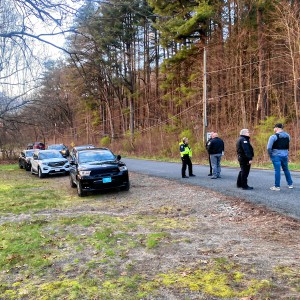 Police report details grisly crime scene in Greenfield
Police report details grisly crime scene in Greenfield
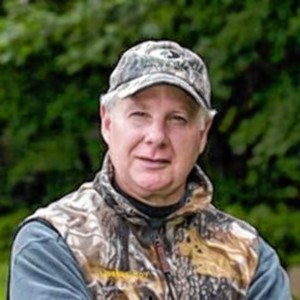 On The Ridge with Joe Judd: What time should you turkey hunt?
On The Ridge with Joe Judd: What time should you turkey hunt?
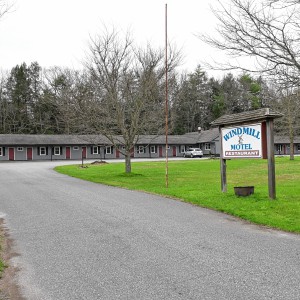 New buyer of Bernardston’s Windmill Motel looks to resell it, attorney says
New buyer of Bernardston’s Windmill Motel looks to resell it, attorney says
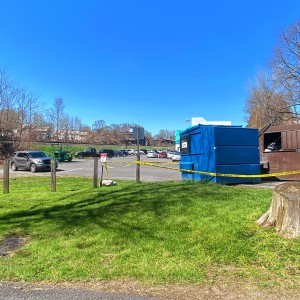 Greenfield man arrested in New York on murder charge
Greenfield man arrested in New York on murder charge
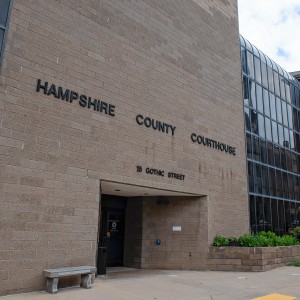 Man allegedly steals $100K worth of items from Northampton, South Deerfield businesses
Man allegedly steals $100K worth of items from Northampton, South Deerfield businesses
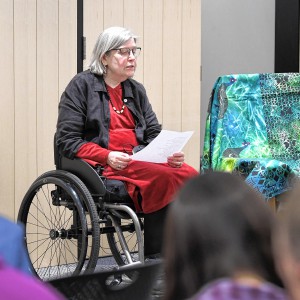 Joannah Whitney of Greenfield wins 33rd annual Poet’s Seat Poetry Contest
Joannah Whitney of Greenfield wins 33rd annual Poet’s Seat Poetry Contest
It was exciting summer drama, attracting Springfield TV news crews and quickly finding its way to the Boston news stations. My kids were living with us at the time and seemed to be enjoying the commotion. Not only that, but they were amused by my response. What’s that? Well, I went to my gun safe, spun the dial, pulled out my holstered .38 caliber snub-nose revolver, loaded it with five hollow-points and strapped it inconspicuously to my hip … just in case.
By then, I had grown accustomed to seeing bobcats in my travels in and around the Meadows. I’ve seen them deer hunting and driving home from work late at night during the winter, when I have many times caught one or a pair thereof hunting the winter cornfield puddles for overnight waterfowl settled on the Colrain Road-Plain Road crotch a mile south of my home. I had only two “neighborhood” deer-hunting sightings: one a large, leggy cat a quarter mile across the road, south and west of my home, that I still believe could have been a Canada lynx because of its long legs; the other an adult female and two small kittens passing my late-afternoon, ridge-top, Smead Hill stand a mile behind my home. I got a good look at one of those kittens just before dark. Defying some type of silent warning signals from its mother, the alert little animal came to within 10 yards of me as I say invisible against a large, twin red pine, face covered by a woodland-camo mask. Suddenly, the pretty little creature froze, lit up with caution brought by a sixth sense that detected something wasn’t quite right, and slowly turned and walked away. I was surprised to encounter such small kittens in December, but was later told by a state wildlife biologist that it must have been, for one reason or another, an unusually late litter.
Prior to moving from South Deerfield to Greenfield in the spring of 1997, and having spent a lot of time in the woods of Deerfield, Whately, Hatfield, Conway, Ashfield and Williamsburg — not to mention my days in the woods near and far as a land surveyor — I had seen just one bobcat in 40-some years. That sighting occurred while sitting still and quiet during deer season with my back up against the western face of the highest ridge off Henhawk Trail, an old Indian Trail and discontinued road through the Conway State Forest, connecting Williamsburg to Conway. I felt privileged to see such an animal furtively making its way through wet terrain just south of Sikes Hill, west of Cricket Hill and northwest of High Ridge. Where better to see one? Back then, in the 1980s, the state had conducted a trap-and-collar bobcat study right there in that general area, live-trapping and collaring just shy of 20 bobcats for the study. The one that crossed my path wore no collar. But, yes, Bobcats have coexisted with us in these parts for many years, despite the fact that most people will never see one.
Not 50 years ago, bobcat hunting with packs of trained, baying hounds was a popular cold-weather activity in our Hampshire and Franklin hills. I remember the late Bill Gaffigan of Buckland speaking fondly of participating in the annual activity with his Buckland/Shelburne/Ashfield pals. And don’t forget that before leghold traps were outlawed in 1996, local trappers sold many a bobcat pelt at auction. In fact, I ran into just such a man who supplemented his income trapping, outspoken Ed Rose — who some may have known from his Holly Barn restaurant in Conway. Yes, I will never forget that cold November day at the Burgy outflow of Henhawk Trail, where I caught Rose exiting the southern woods carrying a large, 38-pound cat he was quite proud of. He should have been proud. It was a massive bobcat, the largest he had ever trapped, he said.
Online information confirms Rose’s assessment. Male bobcats ranges in height from 17 to 23 inches at the shoulder, weighing between 16 and 28 pounds. Canada lynxes appear to the eye to be bigger because they have longer legs. But the fact is that both are classified as medium-sized wildcats and are about the same height and weight. Bobcats and lynx both have tufted ears, Lynx’s a bit longer. Another distinguishing feature is the tail. The lynx’s bobbed tail is shorter and blacker than a bobcat’s. Also, unlike bobcats, lynx stand slightly taller at the hips than the shoulder.
It isn’t impossible that Canada lynx have already or soon will pass through Franklin County. One was photographed in the southern Vermont town of Londonderry in June. Since then, sightings have been reported in Searsburg, Vt., located downstream from the Deerfield River headwaters at Somerset Reservoir. Canada lynx are classified as an endangered species, which, until very recently, had not been seen anywhere south of Vermont’s Northeast Kingdom.
So, there you have it: a quick discussion of bobcats and lynx, all started by a random, friendly neighborhood phone call reporting a kitchen-window sighting.
You gotta love it.
Recorder sports editor Gary Sanderson is a senior-active member of the outdoor-writers associations of America and New England. Blog: www.tavernfare.com. Email: gary@oldtavernfarm.com.

 Keeping Score with Chip Ainsworth: Minutemen ready for their spring formal
Keeping Score with Chip Ainsworth: Minutemen ready for their spring formal Track & field: Greenfield, Mohawk Trail split dual meet
Track & field: Greenfield, Mohawk Trail split dual meet High schools: Amy Mihailicenco, Greenfield girls tennis edge Turners Falls (PHOTOS)
High schools: Amy Mihailicenco, Greenfield girls tennis edge Turners Falls (PHOTOS) Softball: Turners edges Tech, Greenfield’s Paulin notches 100th hit, Mahar win first game since 2019
Softball: Turners edges Tech, Greenfield’s Paulin notches 100th hit, Mahar win first game since 2019
